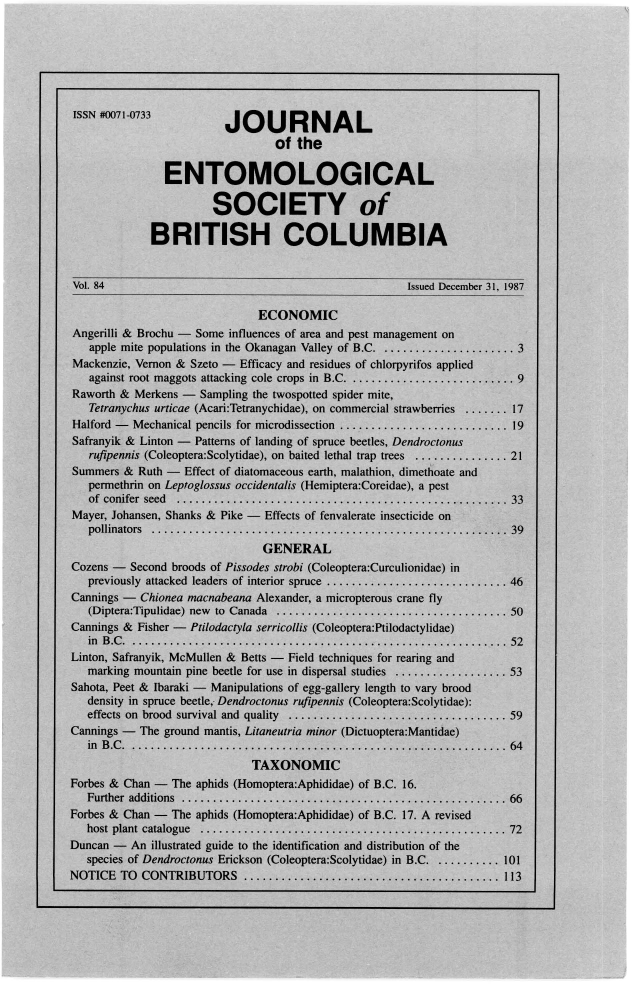An illustrated guide to the identification and distribution of the species of <i>Dendroctonus</i> Erichson (Coleoptera: Scolytidae) in British Columbia
Keywords:
<i>Dendroctonus</i>, Coleoptera, ScolytidaeAbstract
An illustrated key is presented separating adults of the eight species of <i>Dendroctonus</i> Erichson occurring in British Columbia. Punctation on the episternal area of the prothorax and crenulations on the discal area of the clytra are used to provide reliable diagnoses of five species (<i>D. murrayanae</i>, <i>D. rufipennis</i>, <i>D. punctatus</i>, <i>D. simplex</i>, <i>D. pseudotsugae</i>) that could previously be distinguished only with considerable difficulty. Scanning electron micrographs illustrate these characters and simplify interpretation of the key. Distribution maps are provided which show many previously unpublished range extensions.References
Bright, D.E. 1976. The insects and arachnids of Canada. Part 2. The Bark Beetles of Canada and Alaska (Coleoptera: Scolytidae). Agric. Can. Publ. 1576. 241 pp.
Wood, S.L. 1963. A revision of the bark beetle genus Dendroctonus Erichson (Coleoptera: Scolytidae). Illustrated. Great Basin Nat. 23(1-2):1-117.
Wood, S.L. 1982. The bark and ambrosia beetles of North and Central America (Coleoptera: Scolytidae), a taxomonic monograph. Great Basin Nat. Memoirs No. 1. 1359 pp.
Downloads
Published
Issue
Section
License
Authors who publish with the Journal of the Entomological Society of British Columbia agree to the following terms:
-Authors retain copyright and grant the journal right of first publication with the work simultaneously licensed under a Creative Commons Attribution License that allows others to share the work with an acknowledgement of the work's authorship and initial publication in this journal.
-Authors are able to enter into separate, additional contractual arrangements for the non-exclusive distribution of the journal's published version of the work (e.g., post it to an institutional repository or publish it in a book), with an acknowledgement of its initial publication in this journal.
-Authors are permitted and encouraged to post their work online (e.g., in institutional repositories or on their website) prior to and during the submission process, as it can lead to productive exchanges, as well as earlier and greater citation of published work (See The Effect of Open Access).


